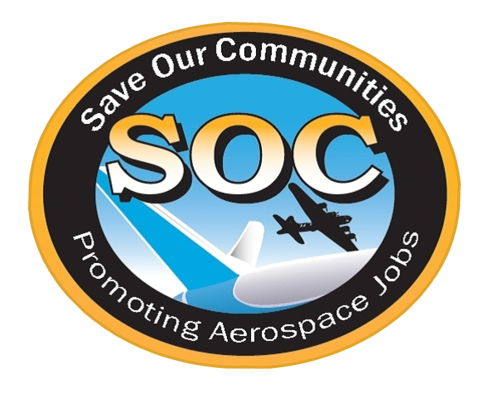Below are some of our most common questions. If you have any questions or would like to talk to us, please email us at info@socnw.org.
Save Our Communities (SOC) is a non-profit organization of concerned citizens from communities throughout Snohomish, Island, and northern King Counties dedicated to preserving the quality of life in this primarily residential area of Puget Sound. Formed in 1992, it is a one-issue group – specifically, we oppose any attempt to transform Paine Field into a ‘SeaTac-North’.
In 1992, a Puget Sound-wide air transportation study (the ‘Flight Plan Project’) was conducted to identify and evaluate possible alternatives to SeaTac expansion. SOC was formed to provide a unified voice of opposition to Paine Field being selected as the ‘preferred alternative’. Subsequently, SOC has been active whenever there has been a perceived threat to the well-established role of Paine Field.
Based on a study of Sea-Tac home values, a 10% reduction is forecast if scheduled commercial air service begins at Paine Field. That 10% would cost our community over $1 Billion. This would, in turn, lower tax revenues to local and county governments which would then cause cuts to police, fire, and general services. That would likely then kick off a downward spiral of degradation, which could only be offset by higher taxes to restore the lost services.
In addition to the impacts brought on by our reduced tax-base and eroding services (above), we would experience a considerable increase in noise, traffic congestion, and air-pollution. In fact a study of Boeing Field, vs other Seattle communities found that, near the airport, residents had:
– 57% higher asthma
– 28% higher pneumonia/influenza
– 26% higher respiratory disease
– 83% higher pregnancy complications
While the negative impact would not be immediate, it is simple math that as commercial flights grow, there is less time for Boeing. Commercial flights have precedence of experimental flights (Boeing test flights are considered experimental). Also, Boeing is continues to use more of Paine Field real estate to park planes. They need all the space they can get.”
Yes and no. A lot of companies locate near airports but these tend to be businesses like strip clubs, fast food restaurants, hotels and parking structures. Companies that are in high-demand such as high tech companies locate near centers of excellence (e.g. UW, Redmond, Bothell) — not near airports.
Since the FAA determined that adding commercial flights would have “no significant impact” on the surrounding communities, there is no legal basis to demand the FAA or the airlines pay for needed improvements such as roads and noise mitigation.
A sequence of closely linked documents jointly created during the 1970s by county, city, and citizen group representatives that culminated in a 1978-79 document (the MRD) that identified the dominant aeronautical activities to be conducted at Paine Field. Also, it established a communications relationship among the stakeholders. SOC considers the MRD a binding agreement between the County and all area stakeholders.
The purpose of the MRD was to establish a formal, written understanding between the County and the cities surrounding Paine Field regarding the role that airport would play in the future. It served as a basis for adjacent land use rezoning — calming prospective residents’ fears about airport expansion — by clearly delineated airport uses to be encouraged and strongly discouraged, and established guidelines for communication and problem resolution between the County and the surrounding cities. Without MRD assurances, many area residents would not have located near Paine Field. We do not know of any other airport having this type of an understanding in place.
In 1992, the Snohomish County Council, the Edmonds School District, the Mukilteo School District, and the cities of Brier, Edmonds, Everett, Lake Forest Park, Lake Stevens, Langley, Lynnwood, Marysville, Mill Creek, Mountlake Terrace, and Mukilteo all passed unanimous resolutions in support of SOC’s position regarding the MRD.
No legal ruling has ever been sought or rendered. It may or may not be legally enforceable, but it is most certainly politically enforceable. To even ask this question is tantamount to asking why the County would undertake such a process at all, if they ultimately weren’t serious about holding up their end of the agreement. Such callousness would amount to rank patronization of tens of thousands of voters.
Because they have honored the MRD for a quarter of a century. However, there are many new faces in county and city governments now, so it’s time to reaffirm this historical support.
General aviation, aircraft-related industries, business & corporate aviation, public service aviation, air taxi, and commuter service.
Supplemental/charter air passenger service, large transport crew training, air cargo aviation, and military aviation.
Absolutely not. SOC is vocally pro-growth, but not growth-at-all-costs. We are most supportive of the continued efforts of those that have attracted a variety of high-paying businesses to the airport area.
In recent years, the term ‘commuter’ has been used erroneously to describe just about any airline that operated frequent flights on any route length with almost any size airplane. It is just another example of a specific term that evolves into common, generic use much like ‘xeroxing’ or ‘fedexing’. And, it is this misuse of a term that is precisely what Save Our Communities (SOC) opponents hope to capitalize on in the discussion regarding Paine Field and the Mediated Role Determination (MRD). However, in the world of the Federal Aviation Administration (FAA), the organization that regulates the operation of all U.S. airlines, the term ‘commuter’ has a very specific definition. It refers to those scheduled airlines that operate airplanes with a seating capacity of 30 passengers or less. And, Snohomish County confirmed this definition in 1987 by including it as one of the conditions for the operation of San Juan Airlines from Paine Field.
